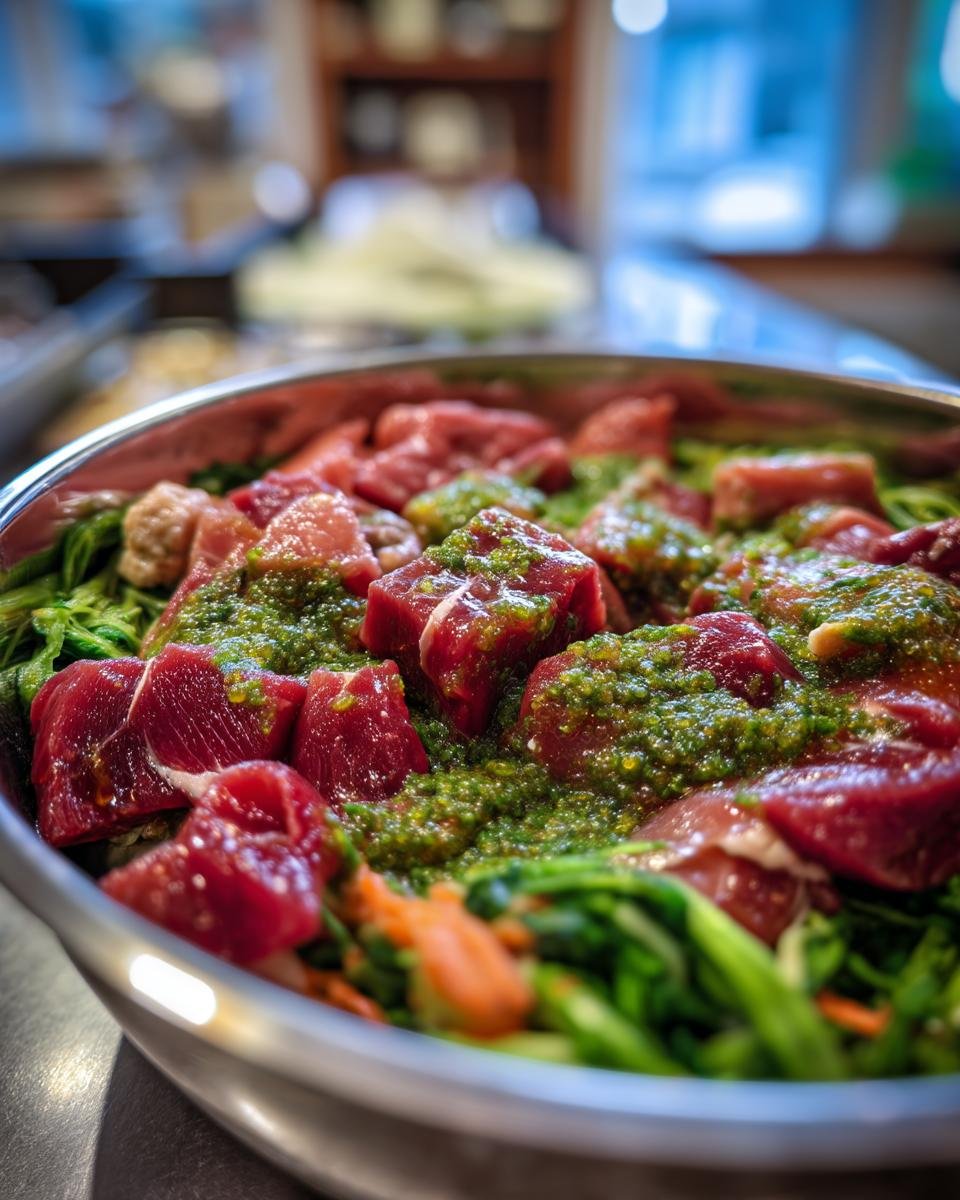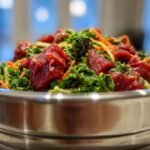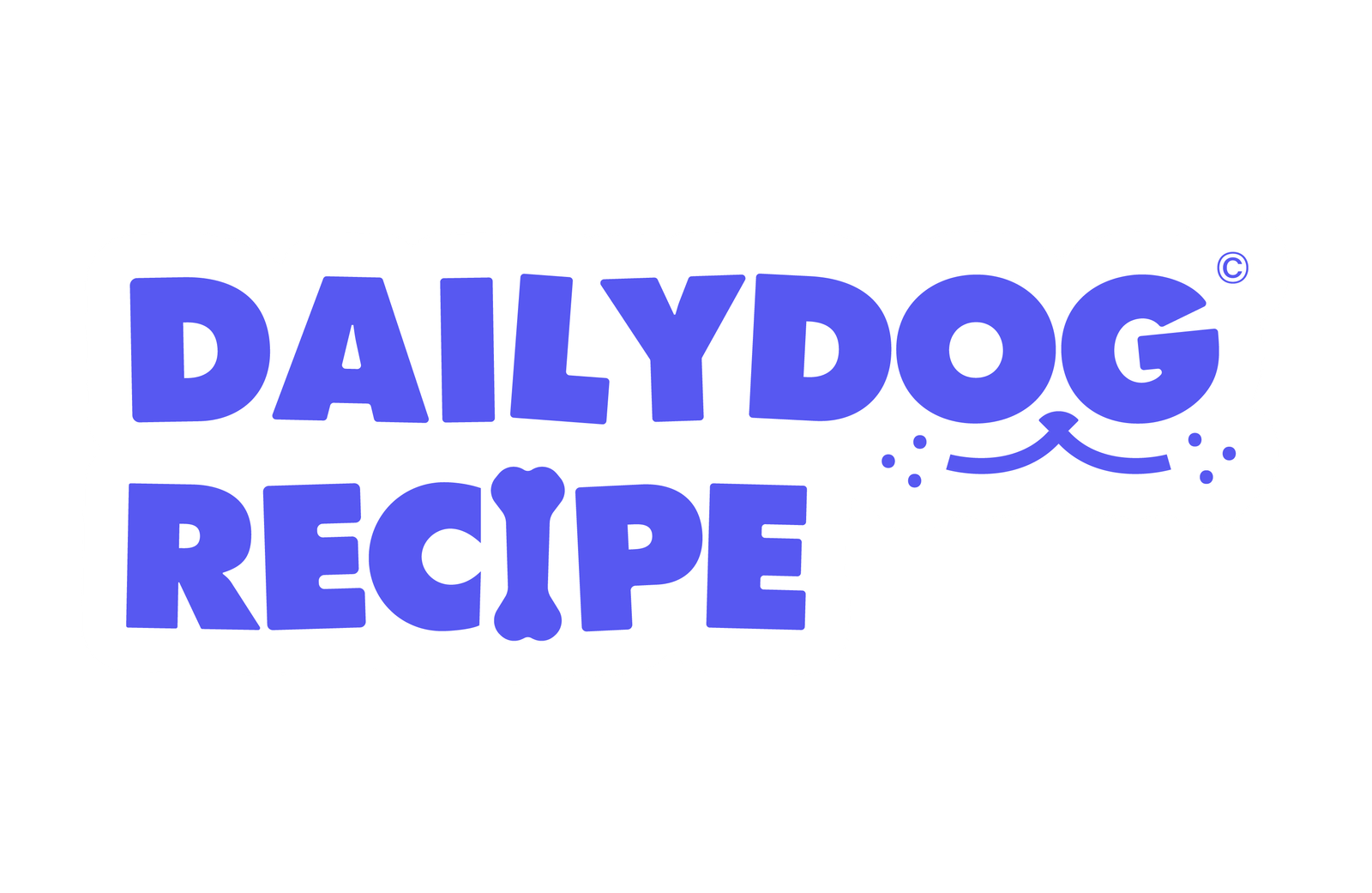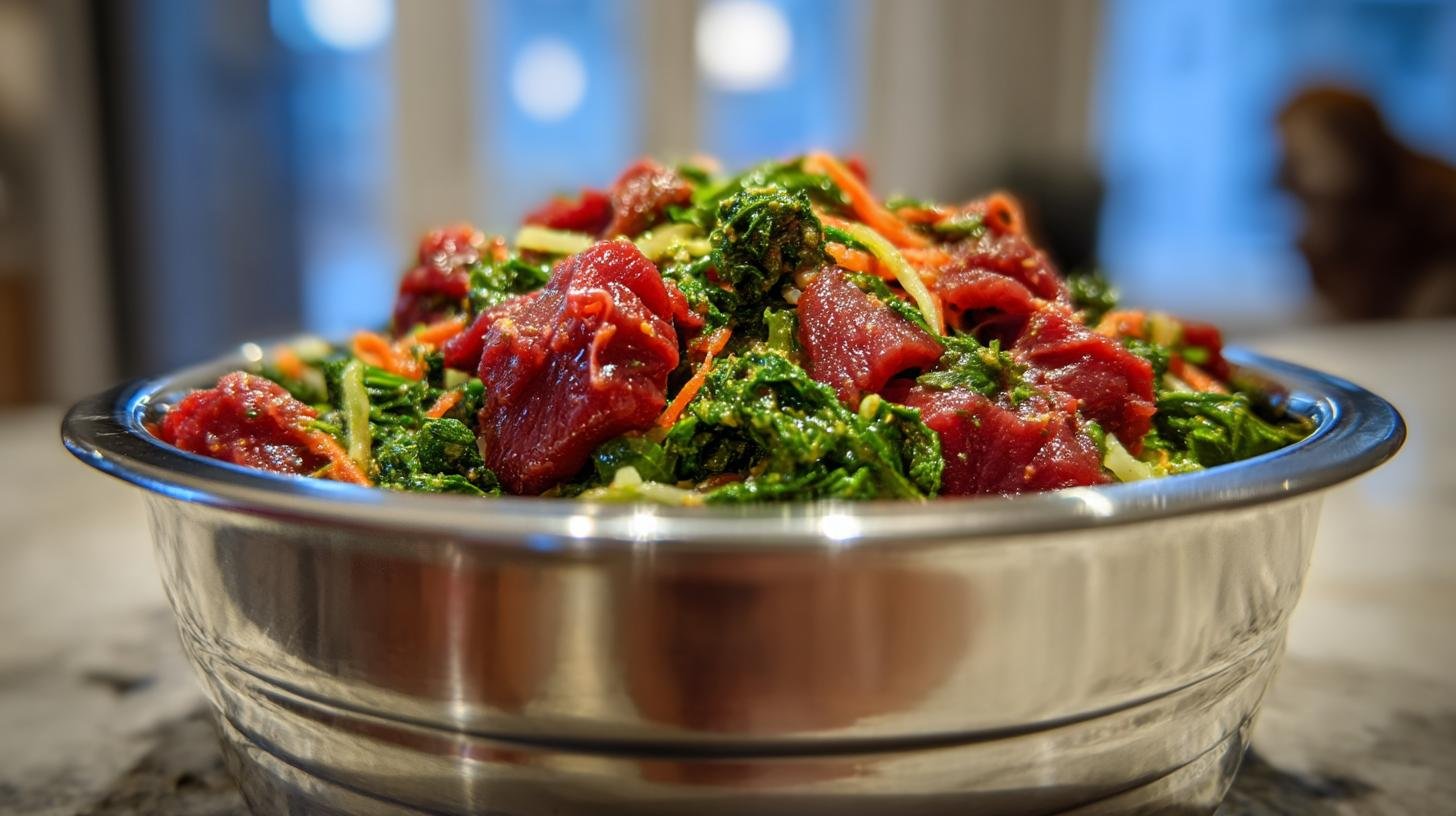More and more pet parents are discovering the benefits of a raw dog diet—and honestly, I’m one of them. When my senior rescue pup, Harley, started having digestion issues and seemed sluggish all the time, switching to a raw diet was a total game-changer. Within weeks, his coat was shinier, his energy bounced back, and let’s just say clean-up duty became way easier (if you know, you know).
Raw feeding might sound intimidating at first, but it doesn’t have to be. I’m all about keeping things homemade, simple, and balanced—nothing fancy, just real food that supports your dog’s health. This isn’t about trendy pet food fads—it’s about going back to basics with fresh ingredients your dog’s body actually recognizes. If you’re curious or just want to dip your paws into raw feeding, you’re in the right place. Let me show you how easy—and rewarding—it can be.

Benefits of Raw Dog Diet
I didn’t fully believe the hype until I saw the changes in Harley with my own eyes. A raw dog diet isn’t just about trendy feeding—it can actually support your pup’s health in some amazing ways. From the inside out, it makes a difference. Here are some of the most common benefits I’ve noticed and that many raw feeders rave about:
- Improved digestion and smaller, firmer poops (trust me, that alone is worth it).
- Softer skin and a shinier, healthier coat—like they’ve had a spa day.
- More energy and alertness, especially in older or sluggish dogs.
- Cleaner teeth and fresher breath thanks to chewing raw meaty bones.
It’s not magic—it’s just real food. When you feed a dog what their body is designed to eat, they thrive. Let’s break down some of these changes a bit more.

Improved Digestion and Stool Quality
One of the first things I noticed after switching Harley to raw? His bathroom habits got a major upgrade. Raw food is easier for many dogs to digest, especially when you skip the fillers and grains. That means firmer stools, less mess, and way less smell. Some days I barely even notice anything in the yard! A healthy gut also means fewer tummy troubles like gas, bloating, or runny poops. It’s a win all around.
Healthier Skin and Shinier Coat
This part blew me away. After just a couple weeks, Harley’s coat went from dull and flaky to glossy and soft. The secret? Natural fats in raw meats and that spoonful of fish oil—I never skip it. Omega-3 fatty acids help reduce inflammation and nourish the skin from the inside out. If your pup’s been itchy or shedding like crazy, raw feeding might be the glow-up they need.
Increased Energy and Vitality
I’ll be honest—Harley used to nap like it was his full-time job. After switching to raw, he started greeting me at the door like a puppy again. Raw meals give dogs steady, bioavailable energy without the sugar spikes or crashes that come with processed kibble. You might notice clearer eyes, more playfulness, and just an overall spark. It’s like giving your dog their spark back. And watching that happen? Pure joy.
Ingredients for a Balanced Raw Dog Diet
When it comes to raw feeding, balance is everything. You don’t need a gourmet spread—just the right mix of meat, organs, bones, and a little boost from veggies and oils. I like to prep everything in batches to make mealtime a breeze. Here’s what I use for Harley’s go-to meal:
- 2 lbs raw meat – I rotate between lean ground beef, chopped chicken thighs, or turkey breast.
- 1 cup raw organ meat – usually a mix of liver and kidney, chopped fine. These are nutrient powerhouses.
- 1/2 cup crushed raw bones – like chicken necks or backs, ground up. Never cooked bones—those are dangerous.
- 1/4 cup pureed vegetables – I blend carrots and spinach until smooth for easy digestion.
- 1 tbsp fish oil – for skin, coat, and joint support. I use wild-caught salmon oil.
Always prep on clean surfaces, wash your hands after handling meat, and store leftovers safely. Your pup’s health starts with what’s in their bowl!
How to Make a Raw Dog Meal at Home
Once you’ve got all your ingredients ready, making a raw dog meal is honestly quicker than brewing your morning coffee. I like to set aside 15 minutes once or twice a week to prep a few days’ worth of meals. It’s simple, just make sure you keep everything clean and organized—especially when working with raw meat. Here’s how I do it:
- Start clean. Wash your hands, sanitize your prep area, and grab clean bowls and utensils.
- Combine the ingredients. In a large mixing bowl, add your raw meat, organ meat, crushed bones, and pureed veggies. Drizzle the fish oil over the top.
- Mix thoroughly. I use gloved hands or a sturdy spoon to make sure everything is evenly distributed—especially the organs, since dogs can be picky!
- Portion out meals. Use containers or freezer-safe bags. I label each with the date and portion size to keep things simple.
- Store properly. Keep 2–3 days’ worth in the fridge and freeze the rest. Meals stay fresh in the freezer for up to 3 months.
And always wash up after! Raw feeding is easy, but safe handling is a must—for you and your pup.
Portioning Based on Your Dog’s Needs
Every dog is different, so one size definitely doesn’t fit all here. A general rule I follow is feeding 2–3% of your dog’s body weight per day, split into one or two meals. Smaller or less active dogs might need a bit less, while puppies or high-energy breeds often need more. For example, a 50-pound adult dog usually eats about 1 to 1.5 pounds of raw food daily. I like to start low and adjust based on weight, energy levels, and how full they seem after meals.
Tips for Success With a Raw Dog Diet
Once you get the hang of it, raw feeding becomes second nature—but there are a few things I wish I knew when I started. These tips will help you keep your pup healthy and your kitchen (mostly) chaos-free:
- Rotate protein sources weekly to give your dog a wide range of nutrients—think beef, chicken, turkey, lamb, even duck.
- Transition slowly by mixing a little raw with your dog’s current food and increasing it over 7–10 days.
- Handle meat safely: use gloves, sanitize surfaces, and don’t leave food out too long.
- Watch stool quality—it tells you a lot. Loose or hard? Adjust the bone or veggie content.
- Keep a feeding log to track what proteins your dog loves and any reactions.
Trust your gut—and your dog’s! Every pup is different, and it’s okay to tweak things as you go.
Ingredient Swaps and Substitutions
Don’t worry if you can’t find a certain ingredient—raw feeding is flexible once you know what your dog likes and what their body needs. I switch things up all the time to keep Harley excited at mealtime and to give him a full range of nutrients.
- Protein swaps: Try duck, lamb, or even venison if you can get it. Sardines (fresh or packed in water) are great for omega-3s and add variety.
- Organ variety: Rotate in spleen or pancreas if available—just make sure you’re sticking to about 10% organ overall.
- Veggie options: Swap carrots and spinach for broccoli, kale, zucchini, or squash—just be sure to puree them for easier digestion.
- Supplements: Not required, but I occasionally add kelp powder for iodine or a canine probiotic during seasonal changes.
Keep it simple, keep it fresh, and your pup will thank you with every tail wag.
Equipment You’ll Need
You don’t need a fancy setup to make raw dog meals at home, but a few tools make things way easier (and way less messy). Here’s what I always keep on hand:
- Meat grinder or food processor – helpful for breaking down bones and tougher cuts.
- Cut-resistant gloves – for safe chopping and handling raw meat.
- Sturdy cutting board – I use a separate one just for pet food prep.
- Mixing bowls – big enough to combine all your ingredients comfortably.
- Freezer-safe containers or bags – for portioning and storing meals.
- Labels and a marker – trust me, you’ll want to know what’s what in the freezer.
That’s it—nothing wild, just kitchen basics that’ll keep you prepped, clean, and organized.

Frequently Asked Questions About the Benefits of Raw Dog Diet
Is a raw dog diet safe for all dogs?
Not every dog is a perfect fit for raw feeding, and that’s okay! Puppies, seniors, or dogs with certain health conditions (like kidney issues or immune disorders) may need a modified approach—or might not be suited to raw at all. That’s why checking in with your vet before making the switch is so important. For Harley, my vet helped me tweak the recipe to fit his age and energy level. A little guidance goes a long way toward keeping your pup safe and thriving.
How do I start transitioning my dog to a raw diet?
Slow and steady wins here. I started by mixing a small spoonful of raw food into Harley’s kibble, then gradually increased the raw portion over 7–10 days. Watch your dog closely—if they have loose stools or seem off, pause and give their gut time to adjust. Every pup is different, so don’t rush it. A calm transition leads to happy tummies.
Can I feed raw bones safely?
Yes—but only certain kinds! Raw meaty bones like chicken necks, wings, or beef ribs (for larger dogs) are soft enough to chew and digest. Never feed cooked bones—they splinter and can be dangerous. I also stick to bones that match Harley’s size and chewing style. Always supervise your dog during bone time just to be safe.
What vegetables are safe to include?
Some veggies are a great bonus in a raw diet—just make sure they’re pureed so your dog can digest them. I rotate carrots, spinach, broccoli, zucchini, and kale. Skip anything toxic like onions, garlic, or grapes. Keep it simple, fresh, and dog-safe, and your pup will soak up those extra nutrients without a fuss.
Nutritional Information for One Serving
Here’s a quick look at what your pup is getting in one hearty cup of this raw meal. Keep in mind these are general estimates and can vary a bit depending on the exact meats and veggies you use:
- Calories: 400
- Protein: 35g
- Fat: 25g (8g saturated, 12g unsaturated)
- Carbohydrates: 5g
- Fiber: 2g
- Sugar: 1g
- Sodium: 90mg
- Cholesterol: 110mg
This blend packs a serious nutritional punch—and it’s all from real, whole foods your dog’s body knows how to use.
What to Do Next
If you’re curious, give it a try! Start small, see how your pup responds, and don’t be afraid to tweak things as you go. I’d love to hear how raw feeding works out for your dog—drop a comment below, share your experience, or let me know your pet’s favorite protein. And if this recipe helped you out, go ahead and rate it! Every wagging tail is worth celebrating around here.
Print
Benefits of Raw Dog Diet: 4 Shocking Health Gains for Pups
- Total Time: 15 minutes
- Yield: 4-5 servings 1x
- Diet: Gluten Free
Description
A raw dog diet consists of uncooked meat, bones, and organs. Supporters claim it improves coat health, digestion, and energy levels in dogs.
Ingredients
- 2 lbs raw meat (beef, chicken, or turkey)
- 1 cup raw organ meat (liver, kidney)
- 1/2 cup crushed raw bones
- 1/4 cup pureed vegetables (carrots, spinach)
- 1 tbsp fish oil
Instructions
- Consult your veterinarian before starting a raw diet.
- Prepare ingredients using clean surfaces and utensils.
- Combine meat, organs, bones, and vegetables in a bowl.
- Portion meals based on your dog’s weight and activity level.
- Store unused portions in the freezer for up to 3 months.
Notes
- Wash hands thoroughly after handling raw meat.
- Monitor your dog’s stool for digestive changes.
- Rotate protein sources for balanced nutrition.
- Prep Time: 15 minutes
- Cook Time: None
- Category: Dog Food
- Method: Raw Feeding
- Cuisine: Pet Food
Nutrition
- Serving Size: 1 cup
- Calories: 400
- Sugar: 1g
- Sodium: 90mg
- Fat: 25g
- Saturated Fat: 8g
- Unsaturated Fat: 12g
- Trans Fat: 0g
- Carbohydrates: 5g
- Fiber: 2g
- Protein: 35g
- Cholesterol: 110mg

